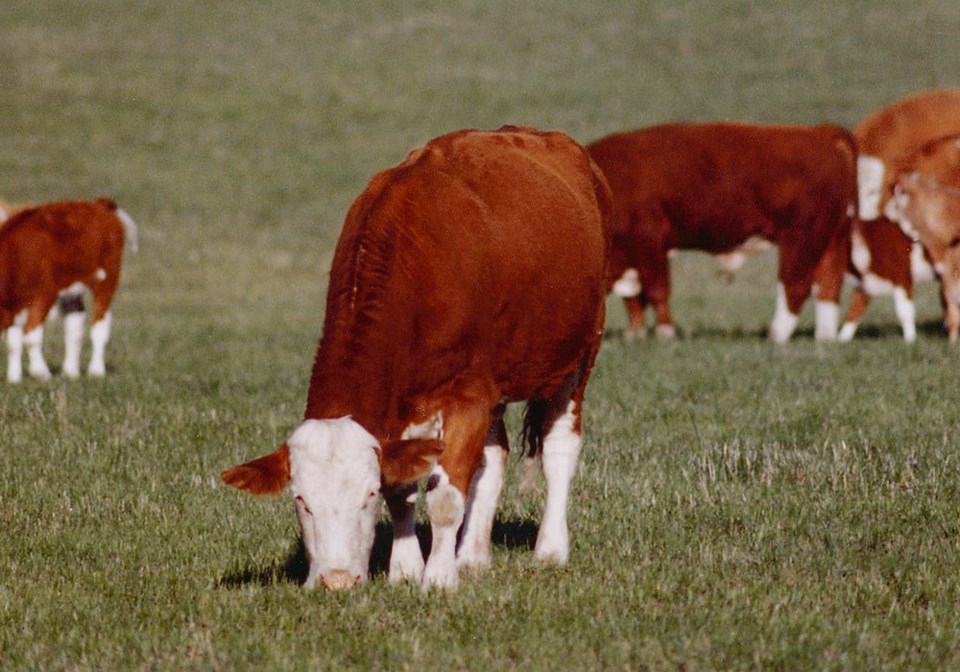WESTERN PRODUCER — Forage-efficient cows maintain their back fat during winter, calve earlier in the calving season and wean heavier calves relative to their own weight, according to a University of Saskatchewan study.
Dr. Greg Penner said the study shows how cow-calf producers can assess their cows without relying on feed-use efficiency, which is a typical measurement.
“In mature cows, we’re not really looking to maximize and, in many cases, not looking to add gain,” he said recently during a presentation at the Saskatchewan Stock Growers Association annual meeting.
“If we just focus on gain and feed intake, we’re ignoring the profit centre for the cow-calf sector. Most ranchers are looking for those cows to maintain body condition score in the environment and conditions that they’re out in.”
The study, by master’s student Justin Delver with producer collaborators Duane Thompson and Ross MacDonald, used 100 first-calf heifers and evaluated them over two calving seasons.
The cows were awarded a maximum of 10 points based on rump fat thickness, which determined how they were coping with the environment during winter feeding.
They were awarded a lower ranking for calving date. Penner said this is because their ability to maintain body condition influences their ability to rebreed and that would mean some cows would be double counted. The sire also influences calving date and researchers didn’t want to discount the cows for that.
Weaned calf weights were also counted, and cows that didn’t produce a calf at all were heavily penalized in terms of scoring, Penner said.
In the second year of the study, cows were re-ranked and Penner said they could pick out the highly efficient cows in both years.
The best cows had thicker rump fat, calved earlier at day 14.5 of the calving season compared to day 30 for those at the lower end, and produced 44 pounds more calf relative to their own body weight, adjusted for sex.
Penner said when the results are considered in calf value-per-pound, the more efficient cows are producing about $90 to $120 more.
But why were some cows more efficient than others?
They were all fed the same diet at the same time so there are no feed effects, Penner said.
The better performers were all statistically lighter, although that wasn’t part of the selection criteria.
“High efficient and low efficient cows actually ate the same amount but because high efficient cows were lighter they ate more as a percentage of body weight,” he explained.
The nine most and nine least efficient cows were brought into the barn and cannulated to study how their rumens operated.
Penner said rumen contraction was one of the first things to be examined. The initial result was surprising, he said, with the low efficiency cows’ rumens contracting with more force and strength. One might assume that would make them more efficient, but the high efficiency cows had smaller rumen digesta mass, or less undigestible fibre content.
“Somehow, these high efficient cows are able to digest what’s available and kick that undigested material out of the rumen at a greater rate,” he said, noting that’s important because cows walk around carrying a lot of weight and undigestible fibre just takes up space.
“The faster those cows can cycle that weight through them, the greater the ability they have to extract nutrients.”
Penner said cow-calf producers can easily use these metrics in their herds.
“Everybody can measure body condition score,” he said. “Write down the measurements, your assessments, for each cow. The key to this approach is record management and record review.”
Knowing the calving date even within a three-day window will be enough to pick out the efficient cows.
Producers will need a scale to weigh their animals but the scale can also be used for other reasons.
He added breed was not considered in this study and producers should be able to use the three criteria to compare within their own herds, which would provide more relevant information.




